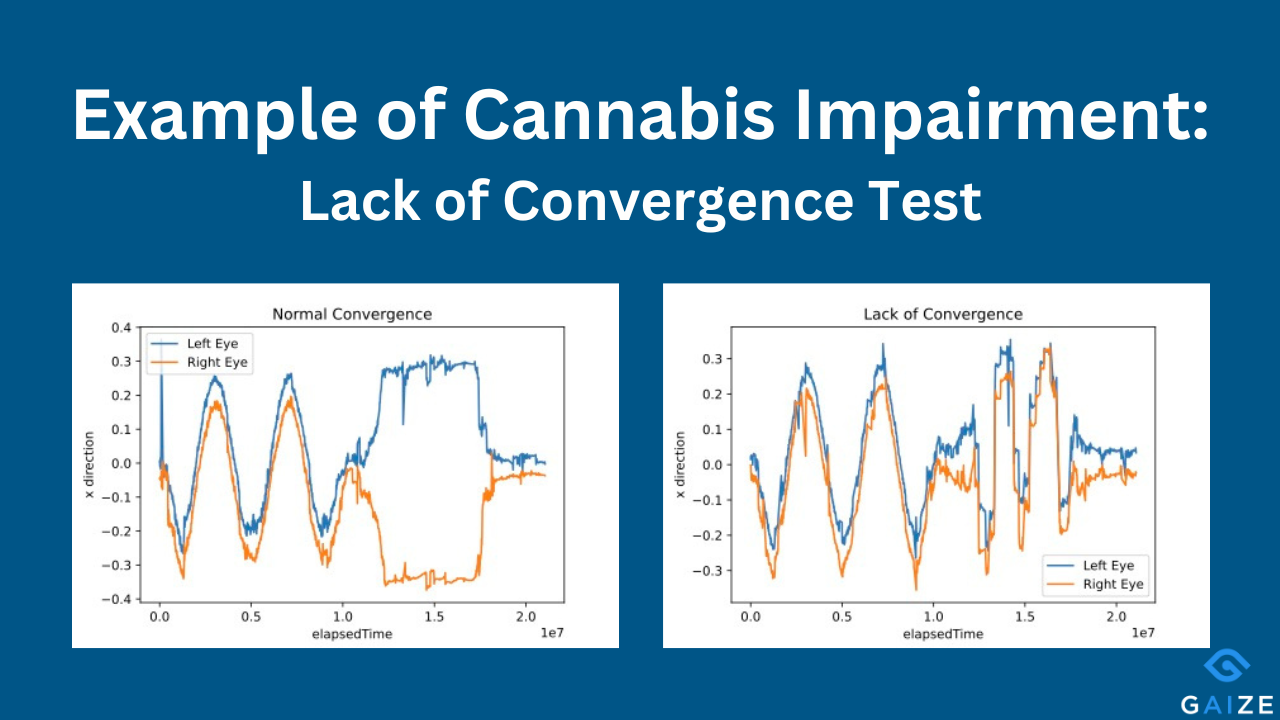What impairment measurement standards does Gaize use?
We get this question all the time. Since there’s no equivalent to the 0.08% blood alcohol content per se standard for THC or any other drug, how can we know if someone is impaired? In order to tackle this problem, the International Association of Chiefs of Police, the National Highway Traffic Safety Administration and the Los Angeles Police Department collaborated in the 1980’s to create the Drug Recognition Expert process. The eye tests from this process are what Gaize utilizes for our impairment detection technology.
Let’s learn more about what standards the Gaize product relies upon to make an impairment determination.
Gaize uses the only governmentally recognized standards for impairment that exist - the Drug Recognition Expert examination.
In particular, Gaize runs totally automated Drug Recognition Expert eye tests. As noted in the intro, these tests were developed by the US Federal Government, the International Association of Chiefs of Police and the Los Angeles Police Department in the 1980s for the explicit purpose of discovering non-alcohol impaired drivers.
If you’re curious about the history of the Drug Recognition Expert (DRE) tests, you can learn more in our blog post about the tests’ history by clicking here.
Since their creation, these tests have been shown to be reliable methods of detecting impairment by many scientific studies, and have been used to prosecute impaired driving cases in every state of the US, Canada, and several other countries. The tests are designed to elicit certain signs and symptoms of impairment from every class of drug. Which clues present themselves in the course of the tests will lead a Drug Recognition Expert (and Gaize) to the determination of impairment or sobriety, and can help determine what class of substance someone is impaired on.
From an impairment perspective, the result is binary, in that a DRE officer will determine the subject to be impaired if the signs of impairment are discovered in the testing process, and unimpaired if they do not. Gaize operates on the same principal. For example, if a law enforcement officer observed a test subject with Lack of Convergence and Pupillary Rebound Dilation, they would infer that the subject was experiencing impairment and could further deduce that the impairment was from a cannabinoid. Gaize conducts those same tests, so the test administrator would see Gaize alert them that the test subject is impaired, and could make the same determination based on the tests that were failed.
Drug Recognition Expert (DRE) examinations are a vital tool for prosecuting impaired driving cases in the US and in several other countries. DRE examinations are widely used in court to prosecute impaired driving cases as they’re the only technique that has been thoroughly tested and scrutinized to reliably detect non-alcohol impairment. They are considered to be the gold standard for impairment detection, and they have been shown to be accurate by several scientific studies.
DRE examinations are an important tool for prosecuting impaired driving cases because they provide evidence that the driver was impaired in the absence of other evidence of drug use. This is important because many drugs, can impair driving even at low levels. Further, it is impossible to distinguish between prior drug use and current drug impairment through chemical drug tests.
This is particularly important in places where cannabis has been legalized. Since a driver can legally have THC and THC metabolites from cannabis use in their body, and since there is no scientifically valid per-se limit for THC in the body, DRE examinations have been the only tool available to discover and classify cannabis impairment. Gaize has changed that with an easy-to-use rapid test that captures high quality evidence of impairment.
This broad court acceptance has made DRE tests the de facto standard for impairment detection. Gaize, in turn, utilizes these same tests in an entirely automated form factor to detect impairment when a DRE isn’t available, or to support the findings of a DRE with critical video evidence.
Bottom line: The impairment standards that courts rely on to prosecute impaired drivers every day are the same standards that Gaize relies on to automatically detect impairment from cannabis and other drugs.

